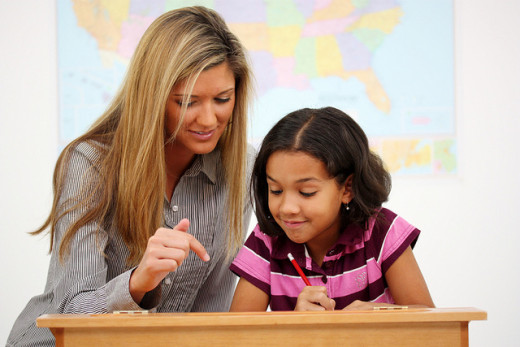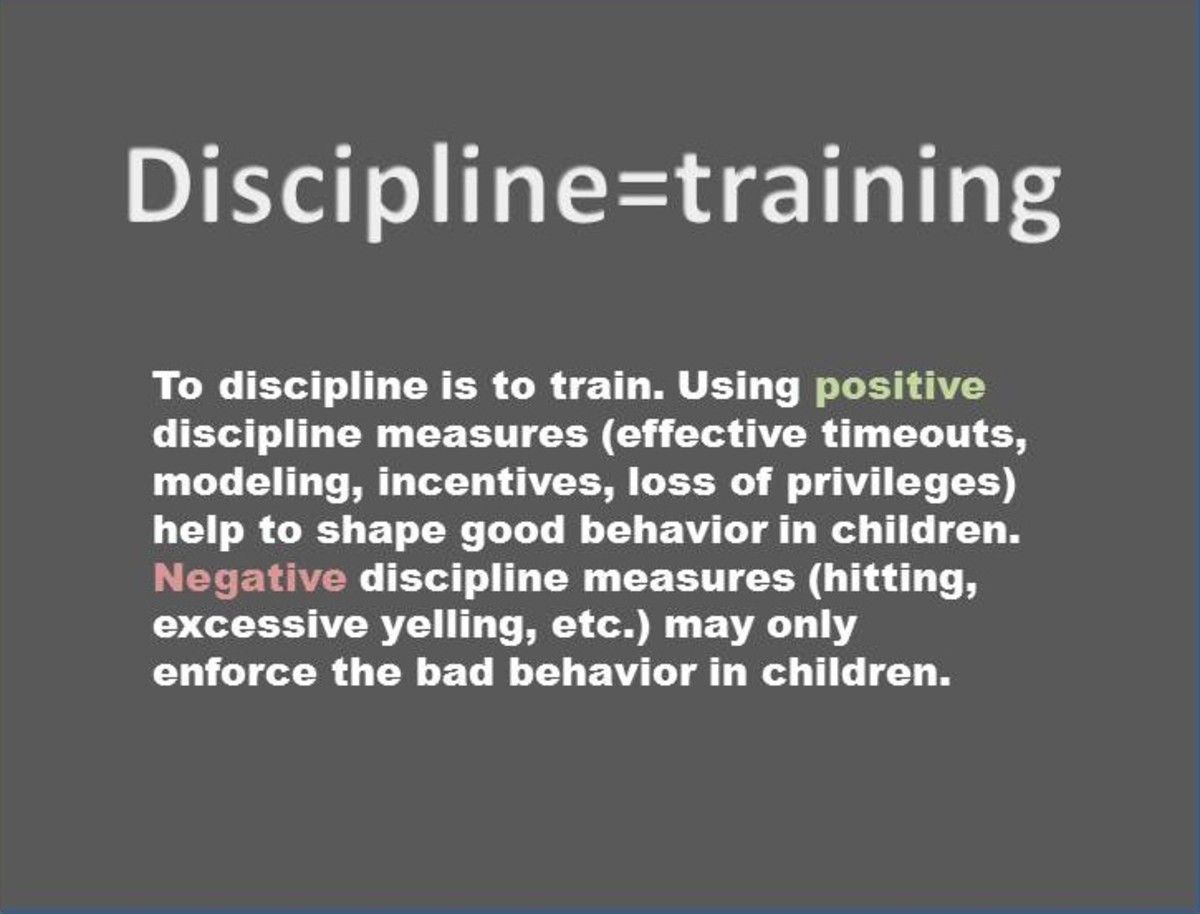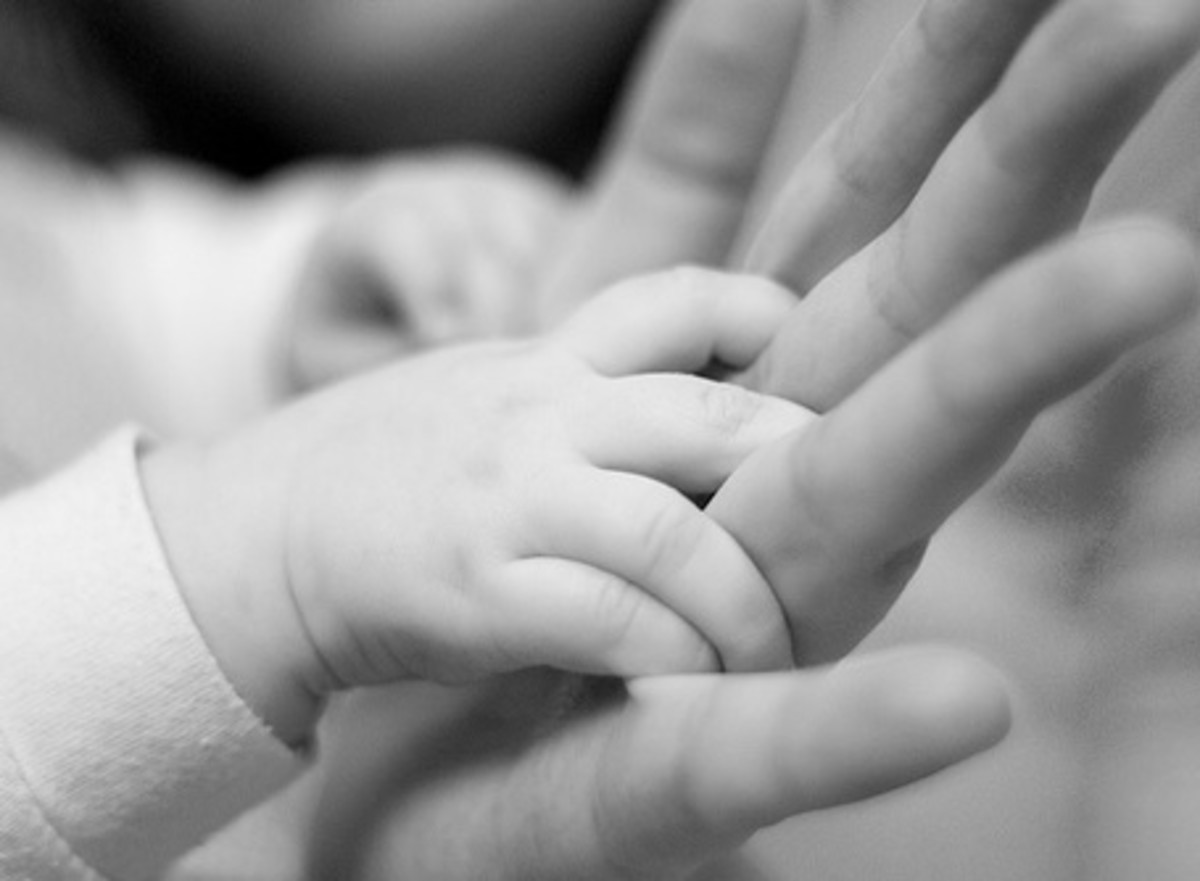Effects of Aggressive Parenting on Others
Typically children within the home are not the only ones negatively affected by the behavior and action of aggressive parents. The interactions they have with teachers, other students, and with other families are also highly affected and are in the general sphere of aggressive parenting. This is not an issue isolated in the home.

Interactions with Teachers
Pushy, aggressive parents seem to be making their mark in classrooms, as more and more complaints are reported everyday from teachers being abused or stressed out wondering what to do about the aggressive parents coming into their classrooms. One teacher posted on a board called Staffroom, asking for advise on a parent that is being “very pushy about her son’s progress and is constantly coming to see me, criticizing the work that we’re doing and complaining he isn’t being pushed hard enough” (Primary Teachers, 2009).
What makes parental aggression towards teachers even worse than the stress it causes the teacher and the relationship between them, is that that parent’s children then begin imitating that of the parent. The child makes the assumption that if his or her parent can treat the teacher that way, there must be a reason and they begin acting the same way, usually using the exact same words they heard from the parent. This is not always a public affair. When parents speak that way about the teacher at home and devalue what the instructor is trying to provide in the classroom, the child will re-enact those conversations and beliefs in the classroom, making it near to impossible for the instructor to get through to the child.
If parents weren’t exacerbating the problem enough by bringing hostility into the classroom, teachers are having to handle all of the other side-effects that come from hostility at home. Teachers are having to be trained on how to handle hostile parents while also handling a classroom full of children. Much of education time today is also being used to practice emergency procedures for “Lock Down” which is literally hostile parents entering the school with guns and other weapons. This is more common than one would like to think.
Quick Poll
What interested you in this article?
Interactions with Students
Parental aggression at home also affects the academic achievement of those students in the classroom. “Parental verbal aggression alone as separate and distinct from physical punishment contributes to lowering children's self-esteem and school achievements. Given the extent of the use of verbal aggression by ordinary parents the authors suggested a need for parent education on the topic of positive methods of child rearing” (Solomon, C. R. & Serres, 1999).
This is not taking into account the behavioral effects that parental violence at home creates. “Partner violence generated intense emotional stress when children believe their security is threatened by parental conflict, or when children believe they are responsible for parental conflict” (Moffitt, & Caspi, 1998).
School is difficult enough for students without the added pressures of violence at home. Parental aggression, and especially child abuse, open up a whole new world of problems for children and for schools.

Interactions with Other Families
“One woman was accused of taking a contract out on a high-school cheer-leader after her daughter failed to make the squad” (A poor-sport parent is ruining morale on the freshman basketball team, 1996).
Too many situations like this one are becoming more and more common in schools today. “Seven in ten PE teachers have witnessed violent or abusive behavior by parents at school sports matches, a new survey has revealed. Growing numbers of moms and dads behave as if they are watching Premiership football games on TV and shout abuse at the referee and even at their own players” (Daily Mail Reporter, 2008).
This happens in every sport in just about every high school. Parents are not only spreading the violent behavior at home, but they are bringing to school with them. Sometimes, other students “get in the way” of their child succeeding and they get to experience it too. Due to one parent’s problem many others are affected.
Summary of Issues
Violence and aggressiveness in the home is a problem that has its affects in many areas. Not only does it affect children mentally, emotionally and temperamentally, it affects the health, actions and even futures of the future generation.
However, violence is not a personal issue. It plays its part into student grades, the health and well-being of other children vulnerable to the actions of aggressive children, other people and families that have to suffer from the violence of parents, and even on taxpayers having to pay for the side effects of the violence.
This is a big issue that must be dealt with through education, action, and new policies. Without immediate action, society is allowing violence and aggressiveness to develop the future generation of adults.
To read about Aggressive Parenting and it's affect on children in the home, you'll have to read the article.
With proper training and support for parents, teachers, and students, the cycle of violence in homes can drastically decrease if not stop altogether. Let's look at a Plan of Action for Addressing Parental Violence.
Related References
A poor-sport parent is ruining morale on the freshman basketball team. (1996).Curriculum Review, 35(7). Retrieved June 9, 2010, from the Academic Search Complete Database at Liberty University: http://web.ebscohost.com.ezproxy.liberty.edu:2048/ehost/detail?vid=4&hid=9&sid=37123174-28ee-47e0-9197-3b18ca5c0c26%40sessionmgr13&bdata=JnNpdGU9ZWhvc3QtbGl2ZSZzY29wZT1zaXRl#db=a9h&AN=9603141979.
Bain, A. & Houghton, S. (1991). The effects of a school-wide behaviour management programme on teachers’ use of encouragement in the classroom. Educational Studies, 17(3). Retrieved June 9, 2010, from the Academic Search Complete Database at Liberty University: http://web.ebscohost.com.ezproxy.liberty.edu:2048/ehost/detail?vid=14&hid=104&sid=1db389de-b76a-450b-aa86-eab2d65b2812%40sessionmgr112&bdata=JnNpdGU9ZWhvc3QtbGl2ZSZzY29wZT1zaXRl#db=a9h&AN=9707220906.
Daily Mail Reporter. (2008). The aggressive parents who bring shameful behavior into school sports. Retrieved June 9, 2010, from the mail Online Web site: http://www.dailymail.co.uk/news/article-1090407/The-aggressive-parents-bring-shameful-behaviour-school-sport.html.
Duman, S., & Margolin, G. (2007). Parents' aggressive influences and children's aggressive problem solutions with peers. Journal of Clinical Child & Adolescent Psychology, 36(1), 42-55. Retrieved June 9, 2010, from the Academic Search Complete Database at Liberty University: http://web.ebscohost.com.ezproxy.liberty.edu:2048/ehost/pdfviewer/pdfviewer?vid=2&hid=104&sid=1db389de-b76a-450b-aa86-eab2d65b2812%40sessionmgr112.
Edmonds, R. (1982). Programs of school improvement: an overview. Educational Leadership, 40(3), 4-12. Retrieved June 12, 2010, from the Academic Search Complete Database at Liberty University: http://web.ebscohost.com.ezproxy.liberty.edu:2048/ehost/pdfviewer/pdfviewer?vid=11&hid=109&sid=bc694de5-ed33-4e9b-8b3d-29995da64998%40sessionmgr114.
Foster, E. M., Jones, D. E., & the Conduct Problems Prevention Research Group. (2005). The high costs of aggression: Public expenditures resulting from conduct disorder. American Journal of Public Health, 95, 1767–1772. Retrieved June 10, 2010, from the Academic Search Complete Database at Liberty University: http://web.ebscohost.com.ezproxy.liberty.edu:2048/ehost/pdfviewer/pdfviewer?vid=3&hid=109&sid=bc694de5-ed33-4e9b-8b3d-29995da64998%40sessionmgr114.
Graham-Bermann, S. A., & Hughes, H. M. (2003). Intervention for children exposed to interparental violence (IPV): Assessment of needs and research priorities. Clinical Child and Family Psychology Review, 6, 189–204. Retrieved June 19, 2010, from the Academic Search Complete Database at Liberty University: http://web.ebscohost.com.ezproxy.liberty.edu:2048/ehost/pdfviewer/pdfviewer?vid=19&hid=109&sid=f9a93fb4-3ff2-42db-9cc0-37c8ad63d56a%40sessionmgr104.
Jouriles, E. N., McDonald, R., Rosenfield, D., Stephens, N., Corbitt-Shindler, D., Miller, P. C. (2009). Reducing Conduct Problems Among Children Exposed to Intimate Partner Violence: A Randomized Clinical Trial Examining Effects of Project Support. Journal of Consulting & Clinical Psychology, 77(4), 705-717. Retrieved June 9, 2010, from the Academic Search Complete Database at Liberty University: http://web.ebscohost.com.ezproxy.liberty.edu:2048/ehost/detail?vid=17&hid=109&sid=f9a93fb4-3ff2-42db-9cc0-37c8ad63d56a%40sessionmgr104&bdata=JnNpdGU9ZWhvc3QtbGl2ZSZzY29wZT1zaXRl#db=a9h&AN=43729062.
Kinsworthy, S. and Garza, Y. (2010). Filial therapy with victims of family violence: A phenomenological study. Journal of Family Violence, 25(4), 423-429. Retrieved June 10, 2010, from the ERIC Database at Liberty University: http://web.ebscohost.com.ezproxy.liberty.edu:2048/ehost/detail?vid=9&hid=109&sid=f9a93fb4-3ff2-42db-9cc0-37c8ad63d56a%40sessionmgr104
Lasley, T.J. & Wayson, W.W. (1982). Characteristics of schools with good discipline. Educational Leadership, 40(3), 28-31.
Lieberman, A. F., Van Horn, P., & Ippen, C. G. (2005). Toward evidence-based treatment: Child–parent psychotherapy with preschoolers exposed to marital violence [Abstract]. Journal of the American Academy of Child & Adolescent Psychiatry, 44, 1241–1248. Retrieved June 11, 2010, from the Academic Search Complete Database at Liberty University: http://web.ebscohost.com.ezproxy.liberty.edu:2048/ehost/results?vid=20&hid=109&sid=f9a93fb4-3ff2-42db-9cc0-37c8ad63d56a%40sessionmgr104&bquery=(Toward+evidence-based+treatment%3a+Child%e2%80%93parent+psychotherapy+with+preschoolers+exposed+to+marital+violence.)&bdata=JmRiPWE5aCZ0eXBlPTEmc2l0ZT1laG9zdC1saXZlJnNjb3BlPXNpdGU%3d.
Loeber, R., & Hay, D. (1997). Key issues in the development of aggression and violence from childhood to early adulthood. Annual Review of Psychology, 48, 371–410. Retrieved June 11, 2010, from the Academic Search Complete Database at Liberty University: http://web.ebscohost.com.ezproxy.liberty.edu:2048/ehost/pdfviewer/pdfviewer?vid=23&hid=109&sid=f9a93fb4-3ff2-42db-9cc0-37c8ad63d56a%40sessionmgr104.
Moffitt, T. E. and Caspi, A. (1998). Annotation: Implications of violence between intimate partners for child psychologists and psychiatrists. Journal of Child Psychology & Psychiatry & Allied Disciplines, 39(2). Retrieved June 10, 2010, from the ERIC Database at Liberty University: http://web.ebscohost.com.ezproxy.liberty.edu:2048/ehost/pdfviewer/pdfviewer?vid=4&hid=9&sid=37123174-28ee-47e0-9197-3b18ca5c0c26%40sessionmgr13.
Moylan, C., Herrenkohl, T., Sousa, C., Tajima, E., Herrenkohl, R., and Russo, M. (2010). The effects of child abuse and exposure to domestic violence on adolescent internalizing and externalizing behavior problems. Journal of Family Violence, 25(1), 53-63. Retrieved June 9, 2010, from the ERIC Database at Liberty University: http://web.ebscohost.com.ezproxy.liberty.edu:2048/ehost/detail?vid=14&hid=109&sid=f9a93fb4-3ff2-42db-9cc0-37c8ad63d56a%40sessionmgr104.
O’Keefe, M. (1996). The differential effects of family violence on adolescent adjustment. Child & Adolescent Social Work Journal, 13(1), 51-68. Retrieved June 10, 2010, from the ERIC Database at Liberty University: http://web.ebscohost.com.ezproxy.liberty.edu:2048/ehost/pdfviewer/pdfviewer?vid=7&hid=9&sid=37123174-28ee-47e0-9197-3b18ca5c0c26%40sessionmgr13
Perrott, E. (1982). Effective Teaching. New York: Longman.
Primary Teachers. (2009). Staffroom. 38-39. Retrieved June 9, 2010, from the Academic Search Complete Database at Liberty University: http://web.ebscohost.com.ezproxy.liberty.edu:2048/ehost/pdfviewer/pdfviewer?vid=4&hid=9&sid=5c38c2fe-b42a-4c30-b5ff-44598145fe95%40sessionmgr12.
Reichenheim, M., & Hasselmann, M. (2004). Parental violence and the occurrence of severe and acute malnutrition in childhood. Journal of Epidemiology & Community Health, 1(58). Retrieved June 10, 2010, from the ERIC Database at Liberty University: http://web.ebscohost.com.ezproxy.liberty.edu:2048/ehost/resultsadvanced?vid=2&hid=104&sid=e6b0c0d1-fffd-4421-bd7b-2f662bf04bc4%40sessionmgr112&bquery=(Aggressive+parents)+and+(child+health)&bdata=JmRiPWE5aCZ0eXBlPTEmc2l0ZT1laG9zdC1saXZlJnNjb3BlPXNpdGU%3d.
Rutter, M., Maughan, B., Mortimore, P. & Ouston, J. (1979). Fifteen Thousand Hours: Secondary schools and their effects on children. London: Open Books.
Sanford, J.P. & Evertson, C.M. (1982). Time use and activities in junior high classes. Journal of Educational Research, 76(3), 140-147.
Solomon, C. R. & Serres, F. (1999). Effects of parental verbal aggression on Children’s self-esteem and school marks [Abstract- Article in French]. Child Abuse & Neglect, 23(4), 339-351. Retrieved June 9, 2010, from the Academic Search Complete Database at Liberty University: http://web.ebscohost.com.ezproxy.liberty.edu:2048/ehost/detail?vid=6&hid=104&sid=1db389de-b76a-450b-aa86-eab2d65b2812%40sessionmgr112&bdata=JnNpdGU9ZWhvc3QtbGl2ZSZzY29wZT1zaXRl#db=a9h&AN=1668895.
The staying power of aggression. (1984). Science News, 126(23). Retrieved June 9, 2010, from the Academic Search Complete Database at Liberty University: http://web.ebscohost.com.ezproxy.liberty.edu:2048/ehost/detail?vid=5&hid=9&sid=37123174-28ee-47e0-9197-3b18ca5c0c26%40sessionmgr13&bdata=JnNpdGU9ZWhvc3QtbGl2ZSZzY29wZT1zaXRl#db=a9h&AN=8812735
Quick Poll
Did you like this article? Was it helpful to you?
© 2013 Victoria Van Ness



